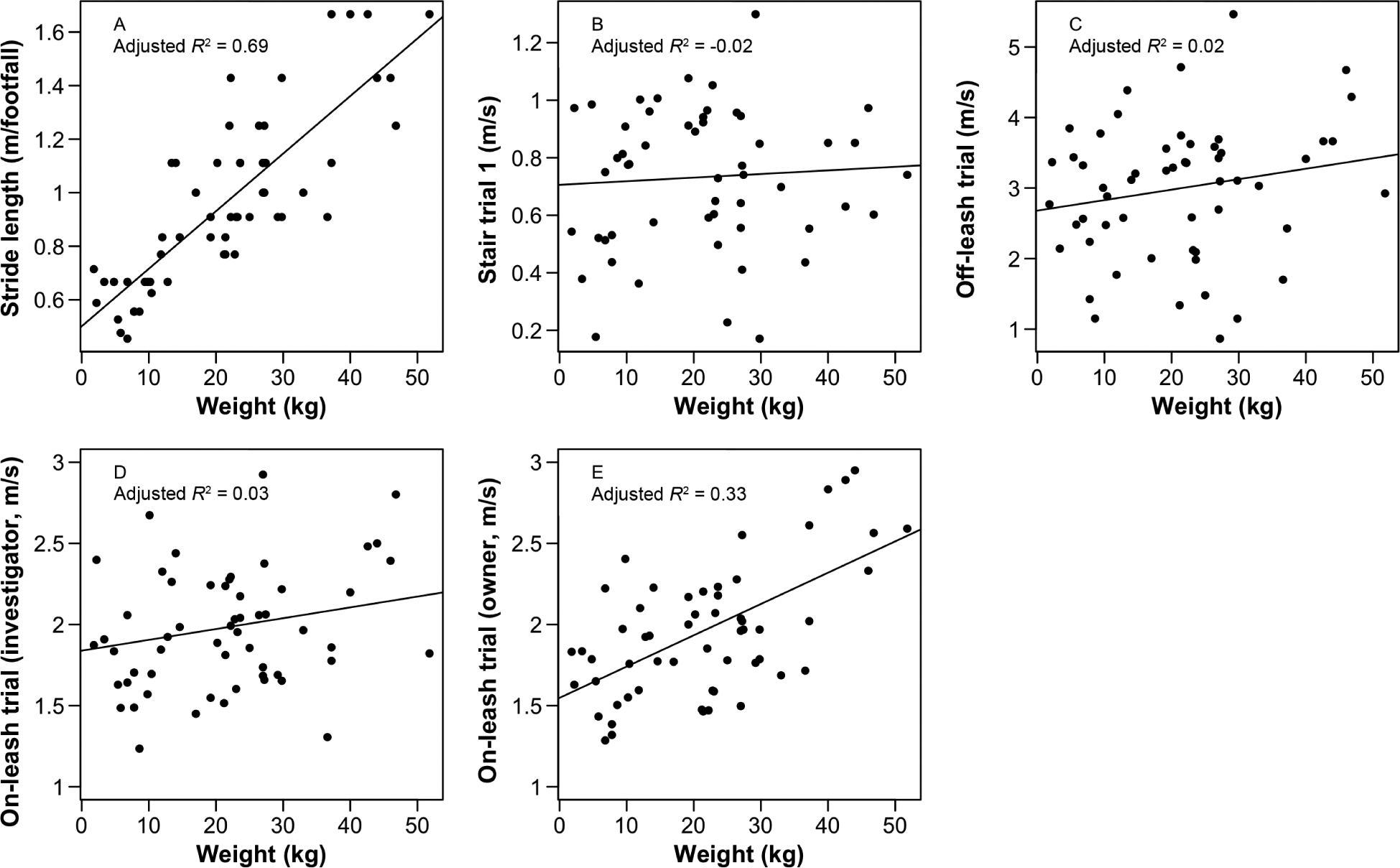Figure 2—

Results of linear regression analysis for body weight as a predictor of stride length (A) and in-clinic mobility trial speed in the stair trial 1 (B), off-leash trial (C), on-leash trial with the investigator (D), and on-leash trial with the owner (E) for the same dogs as in Figure 1. Each in-clinic mobility trial was repeated 3 times and was timed. In stair trial 1, the dog was released at the bottom of a flight of 15 closed-riser stairs by an investigator and allowed to ascend at any pace toward the owner at the top of the stairs. Remaining trials were all performed in 1 direction along the same flat 10-meter indoor course; the dog was allowed to move at any pace toward the owner in the off-leash trial and was trotted by the investigator or owner in the on-leash trials. Data points represent values for individual dogs, and solid lines represent the linear regression line (y = a + b•weight).
